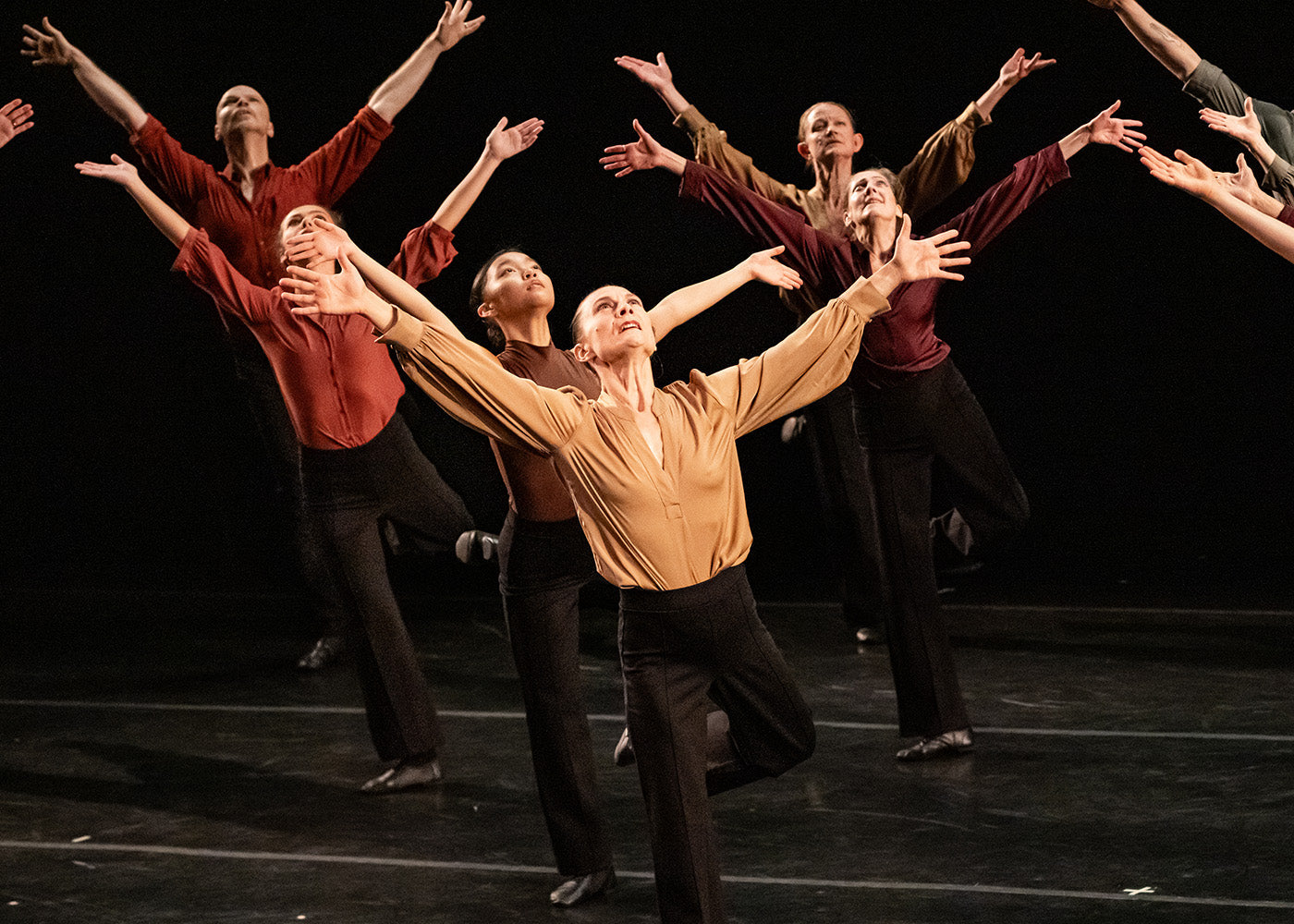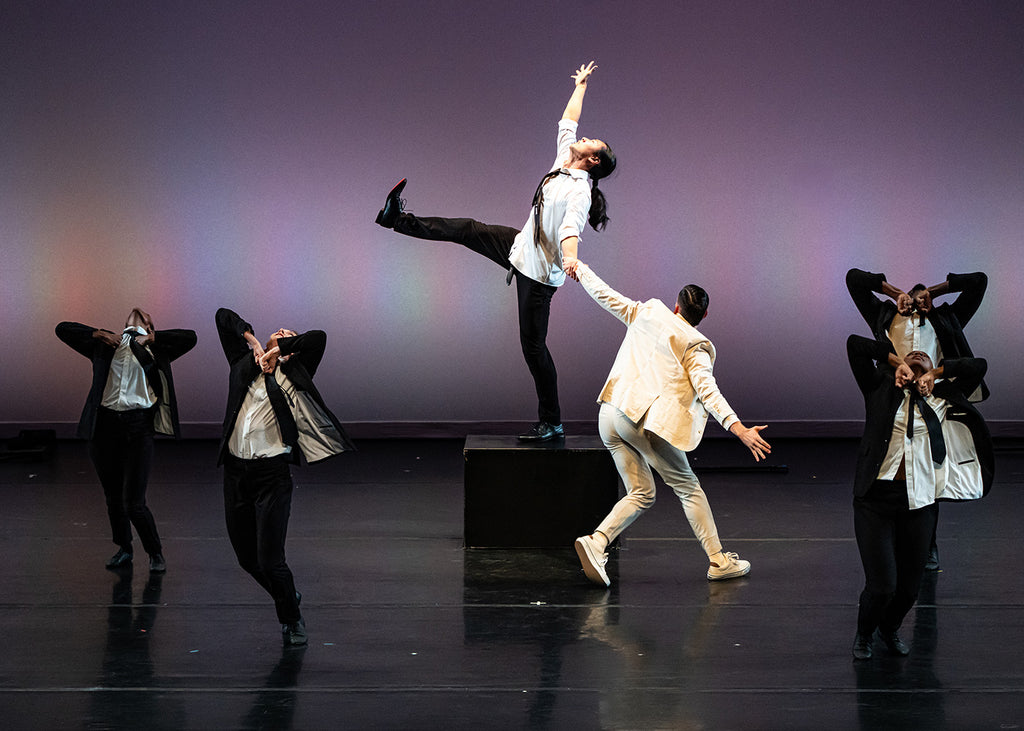Mishima’s Muse
Japan Society’s Yukio Mishima centennial series culminated with “Mishima’s Muse – Noh Theater,” which was actually three programs of traditional noh works that Japanese author Yukio Mishima adapted into modern plays.
Plus
World-class review of ballet and dance.
Limón Dance Company launches its 80th anniversary season with three works that represent the company’s past, present, and future. They not only celebrate José Limón, but demonstrate how his themes guide the company in fresh new ways. The evening opens with a vintage 10-minute solo, “Chaconne” (1942), adapted for this program as a welcoming and inclusive ensemble number, with a large, multi-generational cast of company dancers past and present, students, and faculty. In a restaging of “Emperor Jones” (1956) artistic director Dante Puleio moves a culturally outdated work into relevance. The news of the evening arrives in the finale with “Jamelgos,” a new work exploring queer masculinity by Diego Vega Solorza, who hails from the same region of Mexico as Limón.
Performance
Place
Words



“Uncommonly intelligent, substantial coverage.”
Your weekly source for world-class dance reviews, interviews, articles, and more.
Already a paid subscriber? Login

Japan Society’s Yukio Mishima centennial series culminated with “Mishima’s Muse – Noh Theater,” which was actually three programs of traditional noh works that Japanese author Yukio Mishima adapted into modern plays.
PlusThroughout the year, our critics attend hundreds of dance performances, whether onsite, outdoors, or on the proscenium stage, around the world.
PlusOn December 11th, the Alvin Ailey American Dance Theater presented two premieres and two dances that had premiered just a week prior.
PlusThe “Contrastes” evening is one of the Paris Opéra Ballet’s increasingly frequent ventures into non-classical choreographic territory.
Plus
comments